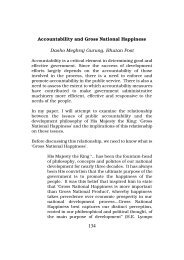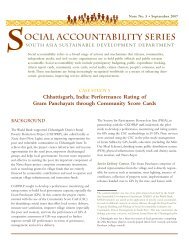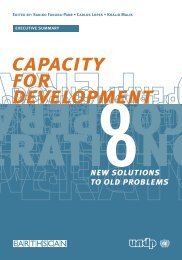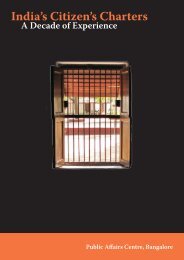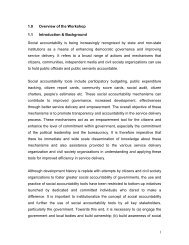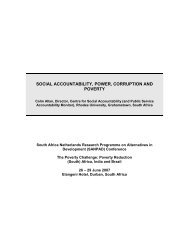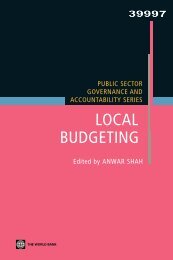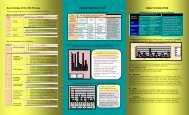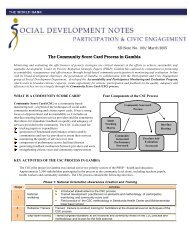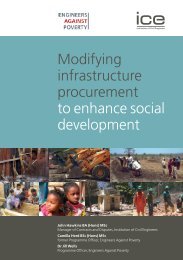KOLAZHY GRAMA PANCHAYAT - SASANet
KOLAZHY GRAMA PANCHAYAT - SASANet
KOLAZHY GRAMA PANCHAYAT - SASANet
Create successful ePaper yourself
Turn your PDF publications into a flip-book with our unique Google optimized e-Paper software.
2 CITIZEN REPORT CARD2.1 What is the Citizen Report Card?The Citizen Report Card (CRC) is a simple but powerful tool to provide public agencies withsystematic feedback from users of public services. CRCs elicit feedback through samplesurveys on aspects of service quality that users know best, and enable public agencies toidentify strengths and weaknesses in their work.In the context of sector reform programmes, CRCs provide an empirical “bottom-up”assessment of the reach and benefit of specific reform measures. It serves to identify the keyconstraints that citizens (especially the poor and the underserved) face in accessing publicservices, benchmark the quality and adequacy of these services as well as the effectiveness ofstaff providing services. These insights help generate recommendations on sector policies,programme strategy and management of service delivery, to address these constraints andimprove service delivery.Citizen Report Cards entail a random sample survey of the users of different public services(utilities), and the aggregation of the users’ experiences as a basis for rating the services.CRCs also help to convert individual problems facing the various programmes into commonsector issues. It facilitates prioritization of reforms and corrective actions by drawingattention to the worst problems highlighted. CRCs also facilitate cross fertilization of ideasand approaches by identifying good practices. Citizen Report Cards provide a benchmark onquality of public services as experienced by the users of these services. Hence, they gobeyond the specific problems that individual citizens may face, and place each issue in theperspective of other elements of service design and delivery, as well as a comparison withother services, so that a strategic set of actions can be initiated.Citizen Report Cards capture citizens' feedback in simple and unambiguous terms byindicating their level of satisfaction or dissatisfaction. Apart from giving summative feedbackon services, CRCs also capture the user feedback on specific aspects of the service. Forexample, the most basic but clear feedback that a citizen may give about the quality ofdrinking water is total dissatisfaction. To appreciate this feedback, we must relate it to theratings given to other dimensions by the same person. For example, adequacy of water supplymay be rated worse than quality. When we look at these two pieces of information, we canconclude that quality of water supply may be a cause of dissatisfaction, but the priority forcorrective action may be on providing adequate water supply. Hence measures of citizens’satisfaction across different dimensions of public services constitute the core of CitizenReport Card studies.Citizen Report Cards do not stop with mere measures of satisfaction - they go on to enquireinto specific aspects of interaction between the service agency and the citizen, and seek toidentify issues that emerge in connection with the same. In more simple terms, it suggeststhat dissatisfaction has causes, which may be related to the quality of service enjoyed by thecitizen (like reliability of water supply, or availability of learning materials in a publicschool), the type of difficulty encountered while dealing with the agency to solve serviceproblems (like complaints of water supply breakdown), and hidden costs in making use of thepublic service (special tuition fees to teachers or investments in filters to purify “drinkingwater”). Therefore we can see that Citizen Report Card studies go into different aspects of10




